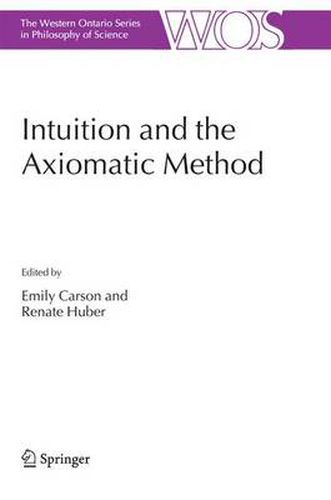Readings Newsletter
Become a Readings Member to make your shopping experience even easier.
Sign in or sign up for free!
You’re not far away from qualifying for FREE standard shipping within Australia
You’ve qualified for FREE standard shipping within Australia
The cart is loading…






This title is printed to order. This book may have been self-published. If so, we cannot guarantee the quality of the content. In the main most books will have gone through the editing process however some may not. We therefore suggest that you be aware of this before ordering this book. If in doubt check either the author or publisher’s details as we are unable to accept any returns unless they are faulty. Please contact us if you have any questions.
Following developments in modern geometry, logic and physics, many scientists and philosophers in the modern era considered Kant’s theory of intuition to be obsolete. But this only represents one side of the story concerning Kant, intuition and twentieth century science. Several prominent mathematicians and physicists were convinced that the formal tools of modern logic, set theory and the axiomatic method are not sufficient for providing mathematics and physics with satisfactory foundations. All of Hilbert, Goedel, Poincare, Weyl and Bohr thought that intuition was an indispensable element in describing the foundations of science. They had very different reasons for thinking this, and they had very different accounts of what they called intuition. But they had in common that their views of mathematics and physics were significantly influenced by their readings of Kant. In the present volume, various views of intuition and the axiomatic method are explored, beginning with Kant’s own approach. By way of these investigations, we hope to understand better the rationale behind Kant’s theory of intuition, as well as to grasp many facets of the relations between theories of intuition and the axiomatic method, dealing with both their strengths and limitations; in short, the volume covers logical and non-logical, historical and systematic issues in both mathematics and physics.
$9.00 standard shipping within Australia
FREE standard shipping within Australia for orders over $100.00
Express & International shipping calculated at checkout
This title is printed to order. This book may have been self-published. If so, we cannot guarantee the quality of the content. In the main most books will have gone through the editing process however some may not. We therefore suggest that you be aware of this before ordering this book. If in doubt check either the author or publisher’s details as we are unable to accept any returns unless they are faulty. Please contact us if you have any questions.
Following developments in modern geometry, logic and physics, many scientists and philosophers in the modern era considered Kant’s theory of intuition to be obsolete. But this only represents one side of the story concerning Kant, intuition and twentieth century science. Several prominent mathematicians and physicists were convinced that the formal tools of modern logic, set theory and the axiomatic method are not sufficient for providing mathematics and physics with satisfactory foundations. All of Hilbert, Goedel, Poincare, Weyl and Bohr thought that intuition was an indispensable element in describing the foundations of science. They had very different reasons for thinking this, and they had very different accounts of what they called intuition. But they had in common that their views of mathematics and physics were significantly influenced by their readings of Kant. In the present volume, various views of intuition and the axiomatic method are explored, beginning with Kant’s own approach. By way of these investigations, we hope to understand better the rationale behind Kant’s theory of intuition, as well as to grasp many facets of the relations between theories of intuition and the axiomatic method, dealing with both their strengths and limitations; in short, the volume covers logical and non-logical, historical and systematic issues in both mathematics and physics.